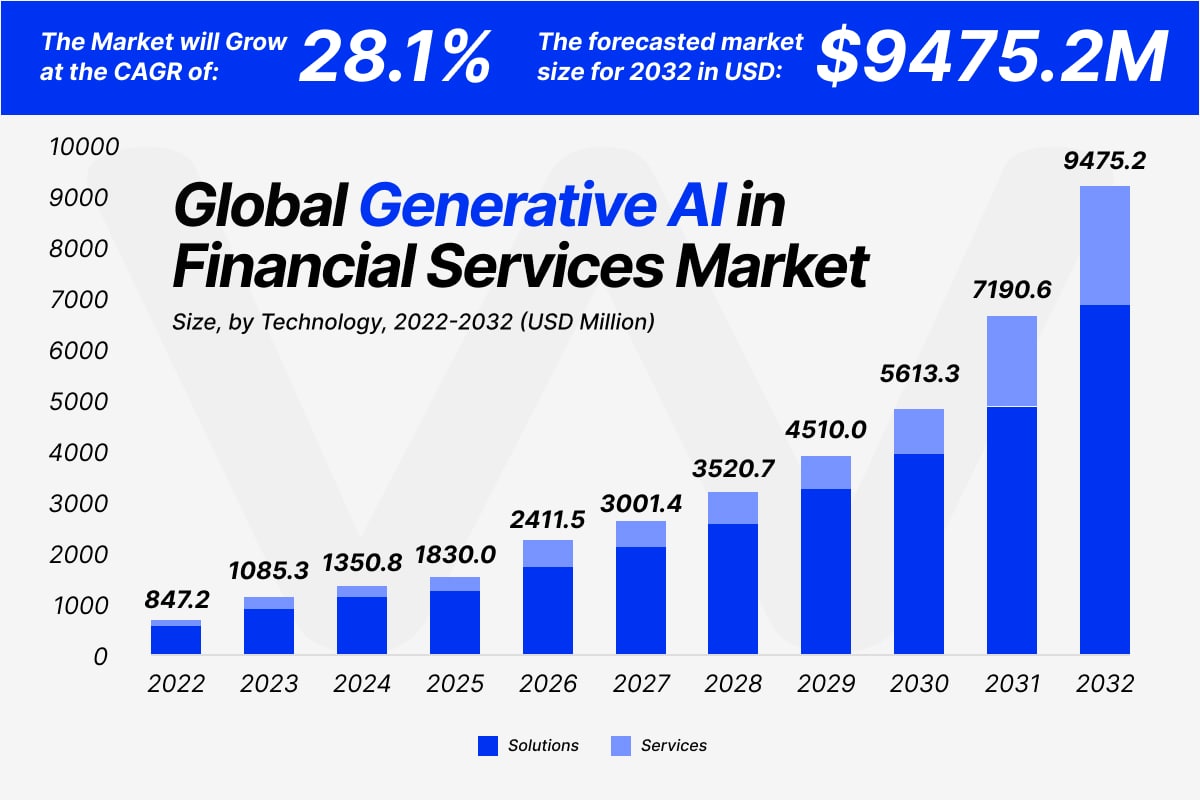The Rise of Generative AI in Financial Institutions: A Game-Changer for CFOs

AI is revolutionizing finance—boosting efficiency, cutting costs, and transforming decision-making at lightning speed.
In an era of rapid technological advancements, financial institutions are increasingly turning to generative artificial intelligence (AI) to enhance their operations. A recent survey found that 80% of Chief Financial Officers (CFOs) plan to increase their investments in AI tools over the next two years. This shift highlights the growing recognition of AI in finance and its potential to improve efficiency, decision-making, and overall financial strategy.

The Growing Adoption of Generative AI in Finance
Financial institutions are embracing AI-powered automation to optimize workflows and reduce operational costs. As of early 2024, 65% of CFOs reported incorporating AI technology into their strategic planning—an increase from 42% just a year prior. With AI-driven financial analysis, firms can streamline processes such as financial reporting, risk assessment, and investment analysis.
Key Benefits of AI in Financial Services
1. Enhanced Efficiency and Productivity
Organizations leveraging AI in financial operations have observed a 32% increase in efficiency across applied areas. AI-powered financial tools assist in automating repetitive tasks, reducing human error, and allowing finance professionals to focus on strategic initiatives.
2. Data-Driven Decision Making
AI-driven data analytics enables CFOs to analyze vast datasets quickly, providing actionable insights for financial forecasting and planning. A McKinsey report found that 71% of companies using AI in finance experienced improved data utilization and faster decision-making processes.
3. Risk Management and Fraud Detection
Financial institutions are increasingly relying on AI for fraud detection and risk management. By analyzing transaction patterns, AI-based security systems can identify anomalies and flag potential security threats, protecting organizations from financial losses.
High-Value Keywords for AI in Finance
To improve search engine rankings and enhance visibility, financial institutions should focus on high-value Google AdWords keywords related to AI-driven finance. Some of the top-performing keywords include:
Asset Management – AI-driven solutions improve efficiency in asset management, optimizing investment strategies and reducing risks.
Financial Services Authority – AI helps institutions stay compliant with regulations enforced by financial authorities.
Private Wealth Management – AI-powered analytics assist in developing personalized strategies for high-net-worth individuals.
By incorporating these keywords naturally, businesses can enhance their SEO strategy, attract targeted readers, and improve digital marketing outcomes.
Challenges and Considerations
Despite its benefits, AI adoption in financial services presents challenges. While 78% of CFOs plan to expand their AI investments, only 13% have reported significant returns on investment (ROI). Additionally, 49% of CFOs feel they need further education on AI’s capabilities, signaling a gap in understanding and implementation strategies.
Future Outlook: AI as a Strategic Asset
Financial giants such as JPMorgan Chase and the Commonwealth Bank of Australia are leading the way in AI-driven financial transformation. JPMorgan Chase has deployed AI-powered language models to enhance customer service and internal operations, while the Commonwealth Bank has invested in AI training programs to upskill employees.
As financial institutions continue adopting AI solutions, its role will evolve from a supportive tool to a strategic asset driving innovation and growth. With increasing investments and advancements in AI technology for finance, CFOs who embrace AI-powered financial management will position their organizations for long-term success in an ever-evolving financial landscape.
Comments
Post a Comment